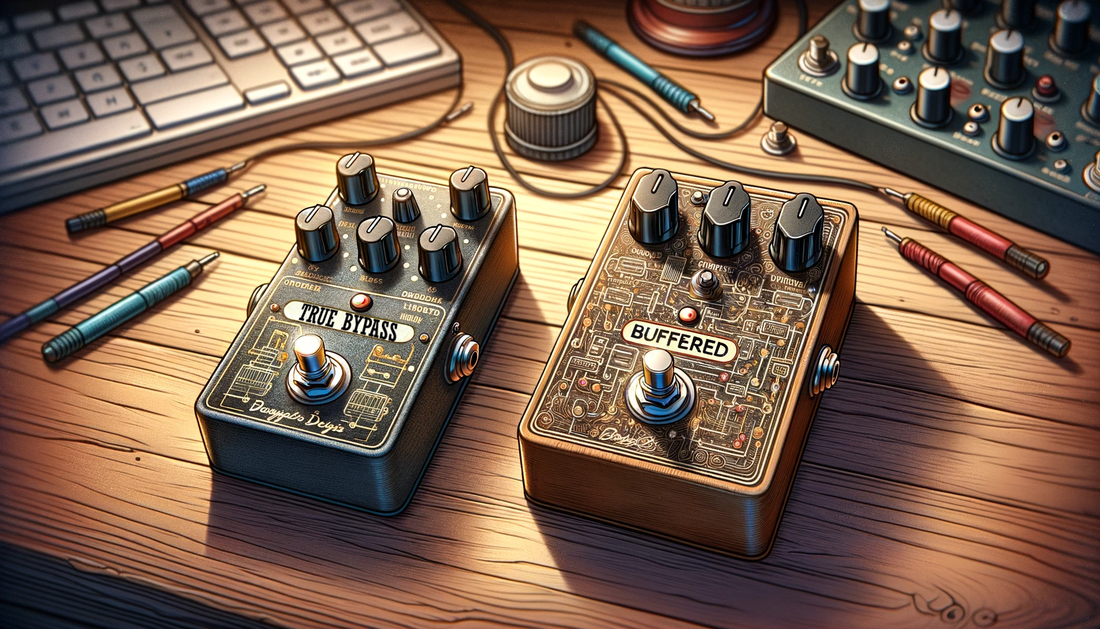True bypass vs buffered effect pedals
There is a lot of discussion on the Internet about how pedals are switched on and off internally. Below is a brief explanation of the two most commonly used methods; true bypass and buffered switching.
What is "true bypass"?
True bypass, while true hardwire bypass, means that your guitar's signal never goes through the guitar effect when it is turned off. This is accomplished by using a relatively expensive switch (3DPDT or DPDT) that switches the input directly to the output when the effect is off. This means there is no signal loss (tonesuck).
What about buffered switching?
Most of the guitar effect pedals are not true bypass, but buffered. Think of Boss, Ibanez, MXR, etc. The idea behind this is that the effect always goes through a small part of the effect, the buffer, which ensures a switch from high to low impedance (resistance) of the signal. This allows the signal to pass through the cables 'more easily', resulting in virtually no loss of tone.
So true bypass is better?!
Yes and no. In general, only true bypass guitar effects between your guitar and amp will give the best result. But as soon as you start talking about more than 10 effects in a row, the impedance (resistance) of the cables must be included. This gets higher as you add more meters of cable. A low impedance, created by a buffered effect, makes it seem like these other cables are almost nonexistent. The advantage being that the higher tones are not lost.

